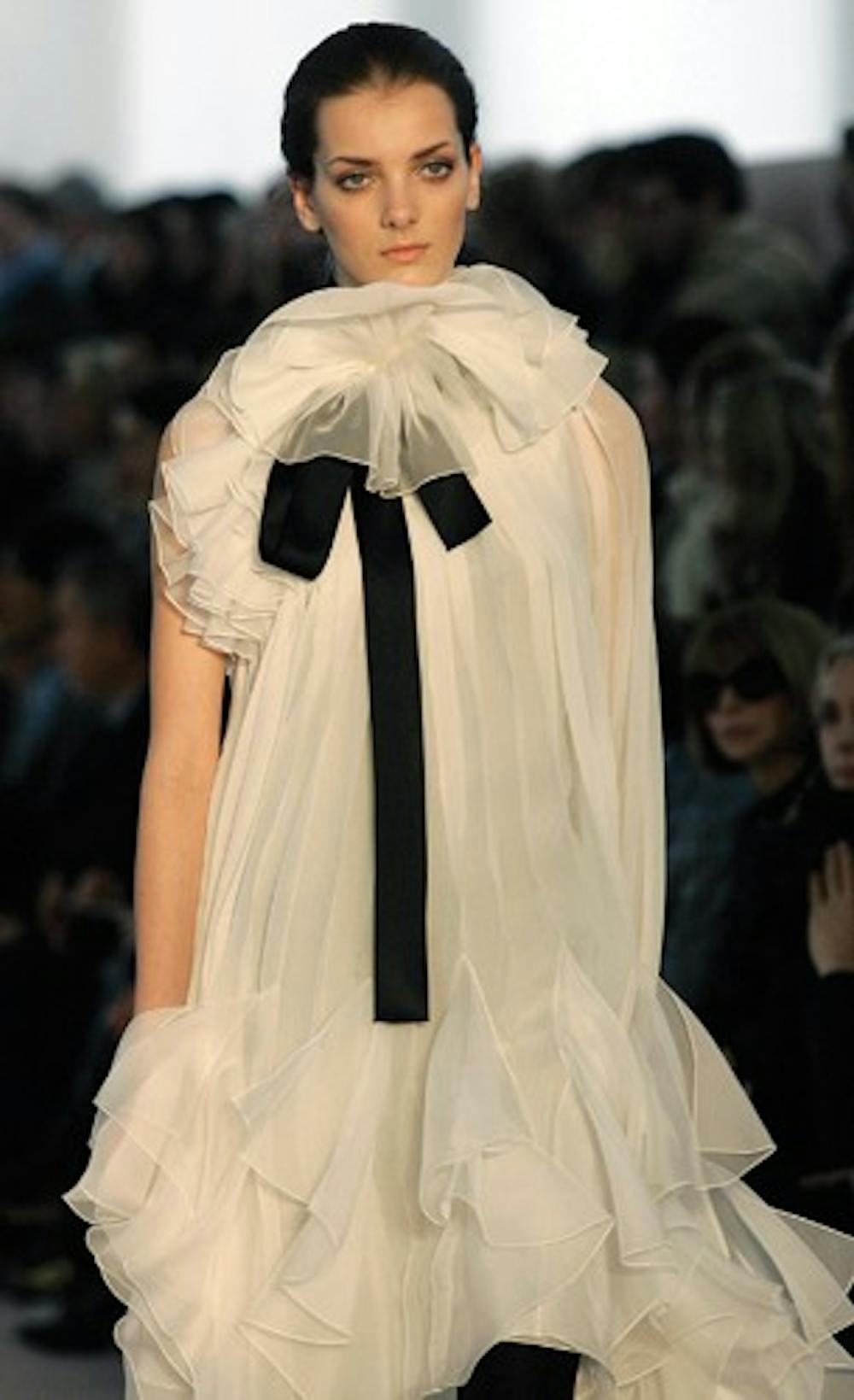Fashion industry veteran and celebrity designer Valentino Garavani showcased his last collection this past October in Paris before leaving the fashion industry forever. \n“This environment is no longer stimulating,” Valentino said during his last show in an interview with fashionweeknews.com.\n“I certainly won’t miss the fashion world. It’s ruined! Everybody’s doing the same things. What’s missing is challenge, creativity, cheerfulness. These days it’s all about numbers! To continue working in an environment which says nothing in particular to me would be a bore.” \nDeborah Christiansen, an apparel merchandising and interior design lecturer at IU, agrees with Valentino. She said cheaply-made clothing and knockoffs now plague the fashion industry as well. \n“Fashion exists because people want to make money,” Christiansen said. \nShe said today’s designers understand that most of what is presented on the runway will not sell, but they do count on the fact that the lifestyle presented on the runway will help sell whatever shows up in the boutiques. The majority of clothing in boutiques are the “sellable” representations of the runway collections, Christiansen said. \n“A Louis Vuitton bag would not be the same bag if it were not for the ‘LV’ logo,” freshman Elizabeth Bennett said. “Someone wearing a similar bag without a designer logo wouldn’t get the same attention only because their bag isn’t designer.” \nThe proof of fashion commercialization is in how much manufacturing goes on overseas, Christiansen said. The clothing is designed to be “throw-away fashion” because the manufacturers want customers to keep coming back and buying more and more of the “expensive-looking,” cheaply-produced clothing. \nA major problem the fashion industry is facing is the issue of knockoffs. Some of those knockoffs reach consumers even before the real deal hits the boutiques and retail outlets, Christiansen said. The industry is then subsequently forced to raise prices to cover the losses due to knockoff merchandise, and in the process loses some of its clientele. \nTo compete with knockoff prices, many designers are now licensing their names out to retailers all over the world, Christiansen said. It is no longer about high-end fashion or careful production. Designers want to make money so they license their name out to stores who usually outsource, and as a result, produce clothing that has the “expensive feel” that is very cheap and affordable but will not last very long. \nSome designers out there still “create beautiful clothing for beautiful clothing’s sake, and not simply for profit,” Christiansen said. However, those numbers are getting smaller each year as designers find it harder to support themselves and their designs due to financial hardships. \n“People want things that look like they cost a lot, but those items sacrifice quality,” said James DiMartino, a senior majoring in fashion design. \nStores like H&M put out as much clothing as possible, but in the process sacrifice quality, and shoppers know that the clothing will not last more than two seasons, DiMartino said. \nDiMartino reluctantly named Armani as the designer he thinks has become most commercial during the past few years.
Valentino says fashion industry lacks ‘creativity’
Designer cites commercialization for industry decline

Get stories like this in your inbox
Subscribe





